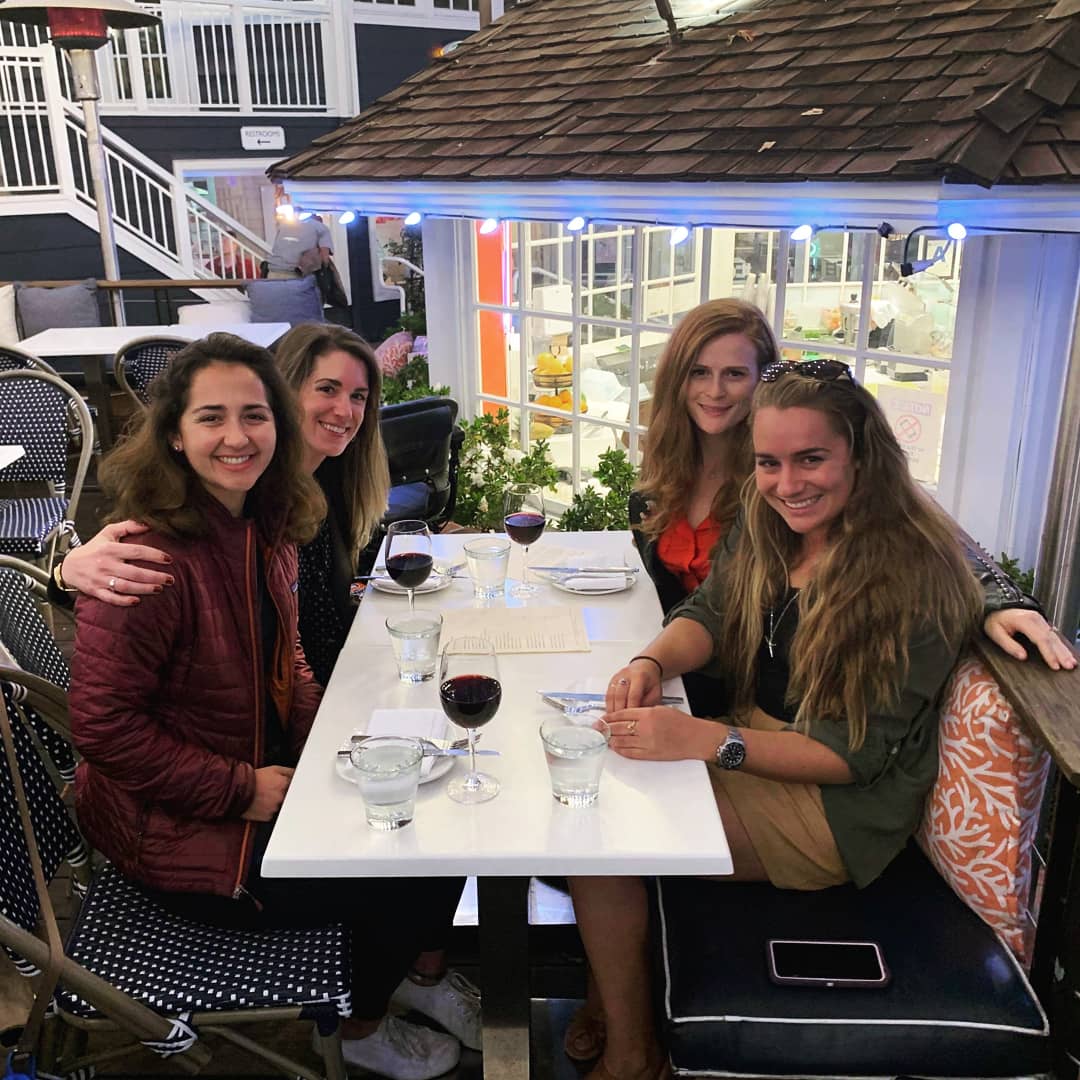I sat on the train watching endless beaches pass by, each filled with keen surfers, roller-blades and fisherman. It was the quintessential Californian scene, where coastlines, sunsets, beaches and surf reign supreme. As I made my way further down the coast, beaches were traded for suburbs as I reached the final stop on my Californian adventure – San Diego. As I left the train, I found myself in a vibrant city full of sunshine, palm trees and tacos.
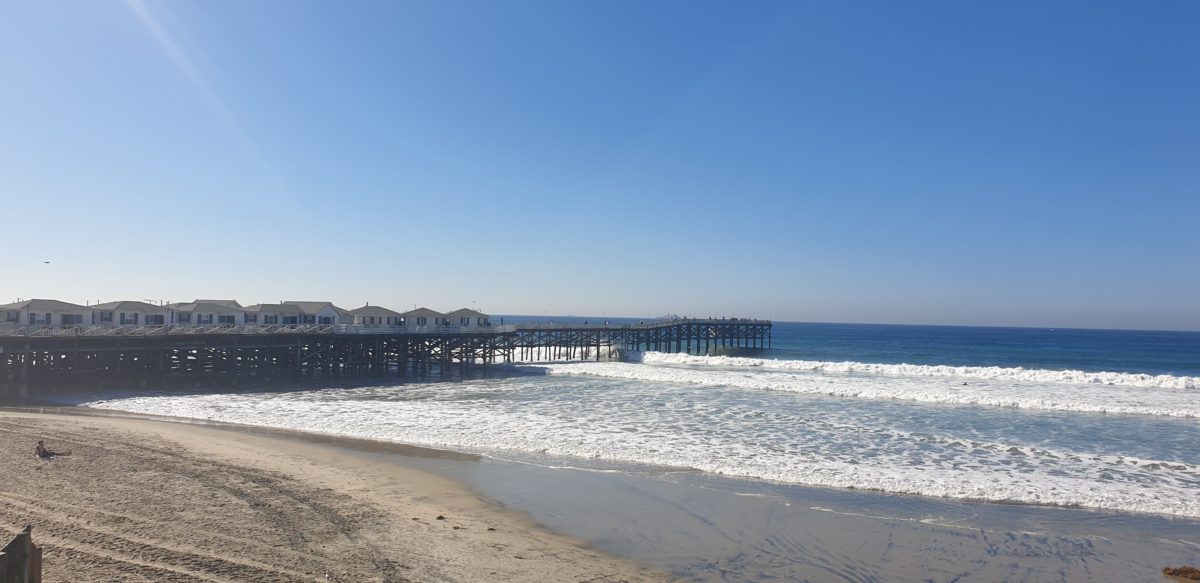
Photo: Joanna Smart
I was in San Diego to work with Blue Latitudes. Founded by Amber Sparks and Emily Hazelwood, Blue Latitudes is an environmental consultancy which works closely with industry, particularly within the oil and gas sector, to design sustainable, creative, and cost-effective solutions for environmental issues. In addition, the company also has a not-for-profit arm, the Blue Latitudes Foundation, which aims to conserve the ocean through education, outreach and research.
I was drawn to Blue Latitudes for a simple reason, they are innovators. Amber and Emily started the company by solving an environmental problem in a very unique way. California has a large number of Oil and Gas Platforms, several which are requiring decommissioning in coming years. Faced with the challenge of what to do with the platforms, Amber and Emily began researching the feasibility of turning the decommissioned oil rigs into artificial reefs.
Whilst this sounds like an unusual idea, scientifically it makes a lot of sense. Many oil platforms have been in the water for over 50 years. During this period, they have accumulated a lot of life. Sponges, anemones, scallops and all kinds of encrusting invertebrates cover the structure, creating a beautiful network of colour. In turn, the structure provides shelter, food and habitat for a variety of marine life including fish species, seals and sea lions, octopus and sea birds. Some studies have found these structures to be just as productive as coral reefs! Removing the structure removes all that biodiversity and consequently the habitat for a large variety of marine life.
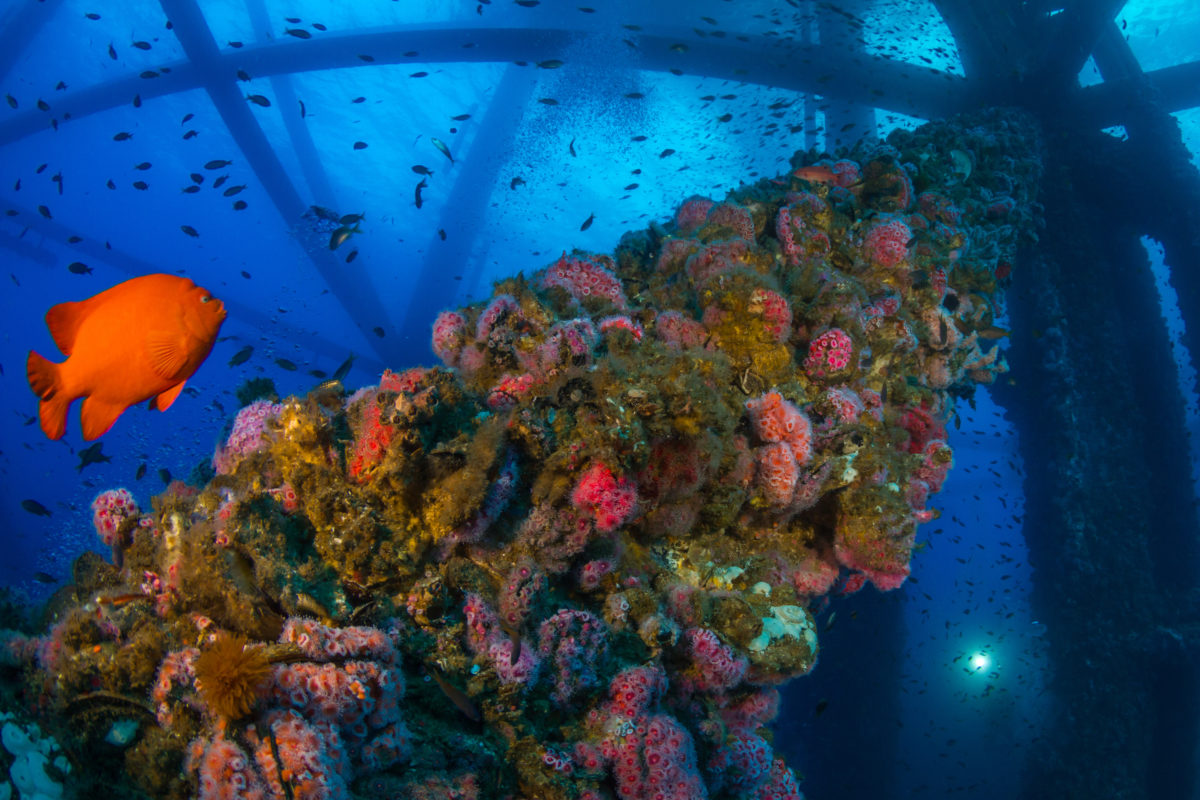
Photo: Joe Platko
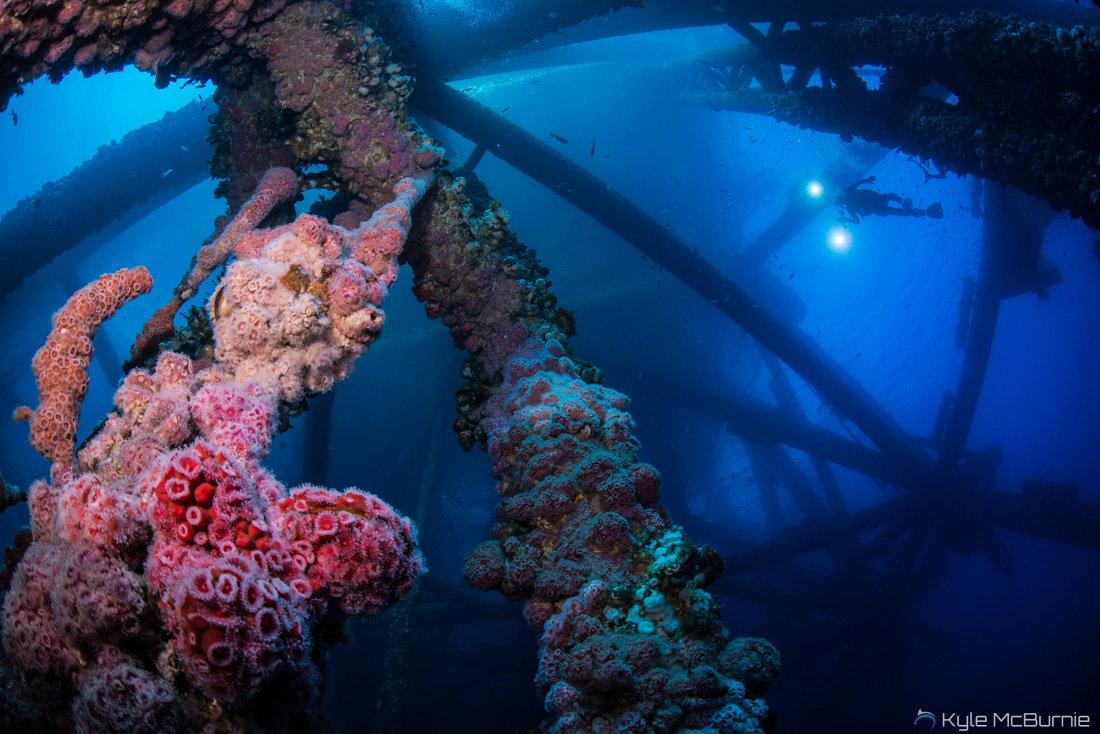
Photo: Kyle McBurnie
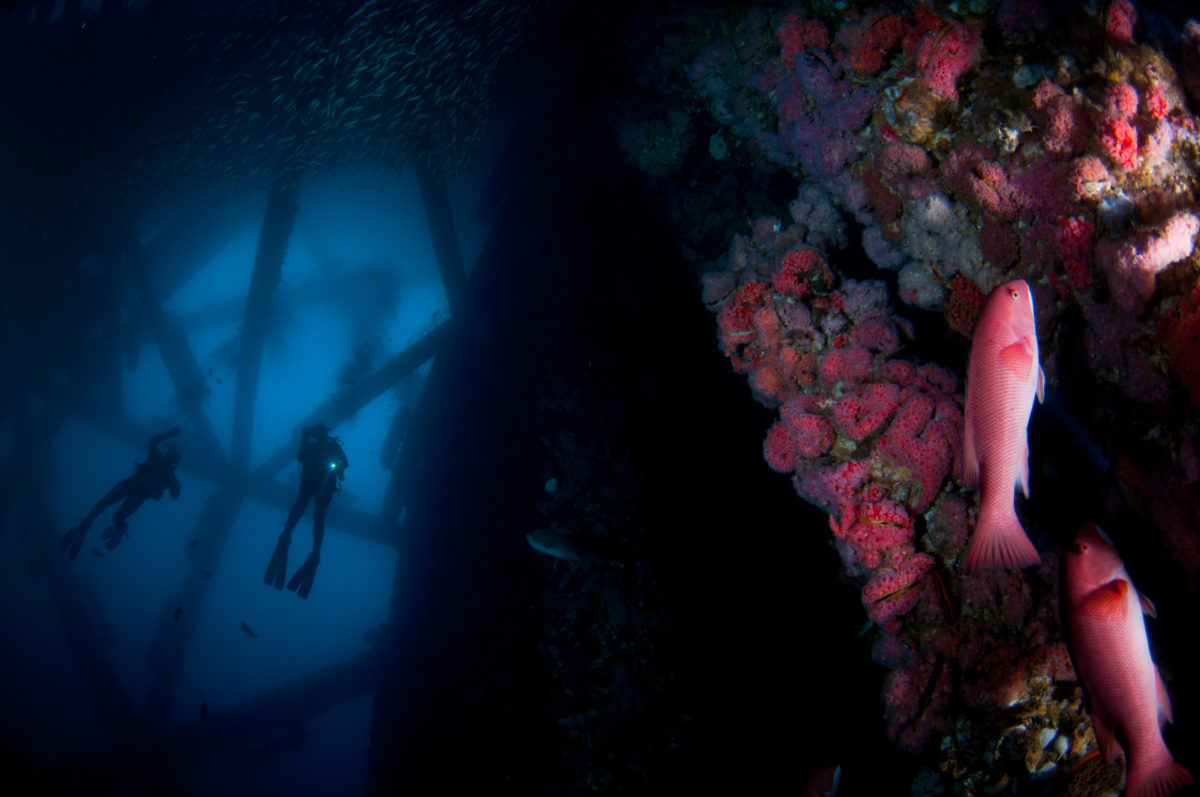
Photo: Cain Delacy
However, converting an oil rig into an artificial reef isn’t quite as simple as just leaving it there. Drilling holes need to be capped, environmental assessments are undertaken and liaison with stakeholders conducted. In addition, there is a plethora of legislative and policy considerations that need to be addressed. This is where Amber, Emily and their data and GIS whiz, Claire Gonzales come in. Their tireless work with the community, oil and gas companies and fishing industries ensures employing a rigs-to-reefs strategy is considered in decommissioning planning and discussions.
From the rigs to reef program, Blue Latitudes evolved. The company now works across the offshore industry, providing a range of different services including ROV surveys, mapping technology and fisheries analysis, public outreach and communications, marine research and environmental impact assessments. As an indicator of their success, Amber and Emily were recognized on the Forbes 30 Under 30 list in 2018.
I joined Blue Latitudes at the end of January to get a taste of what the business and foundation are all about. Through my two-week period with the team, I was able to experience what working in this sector of consulting, as well as running on not-for-profit was like. Amber, Emily and Claire took me under their wing, teaching me about the business as well as what it takes to make it as a young female entrepreneur in a traditionally male-dominated offshore industry.
Some of my first tasks at Blue Latitudes involved helping the team with data processing from their recent research expedition to Tonga. The expedition examined the repercussions of localized anthropogenic change in a marine environment and evaluated the sustainability of current ecotourism practices using social and ecological surveys. I helped to sort and categorize the data for analysis.
After this, it was time for some hands-on work. Amber and I headed to Scripps Institute of Oceanography and the Birch Aquarium to film the first episode of the foundation’s new mini-series, Diving In – Exploring Women in STEM. This series aims to highlight women who are working in STEM fields and making a positive impact on the ocean environment. My task was to film and produce the first two episodes of the series.
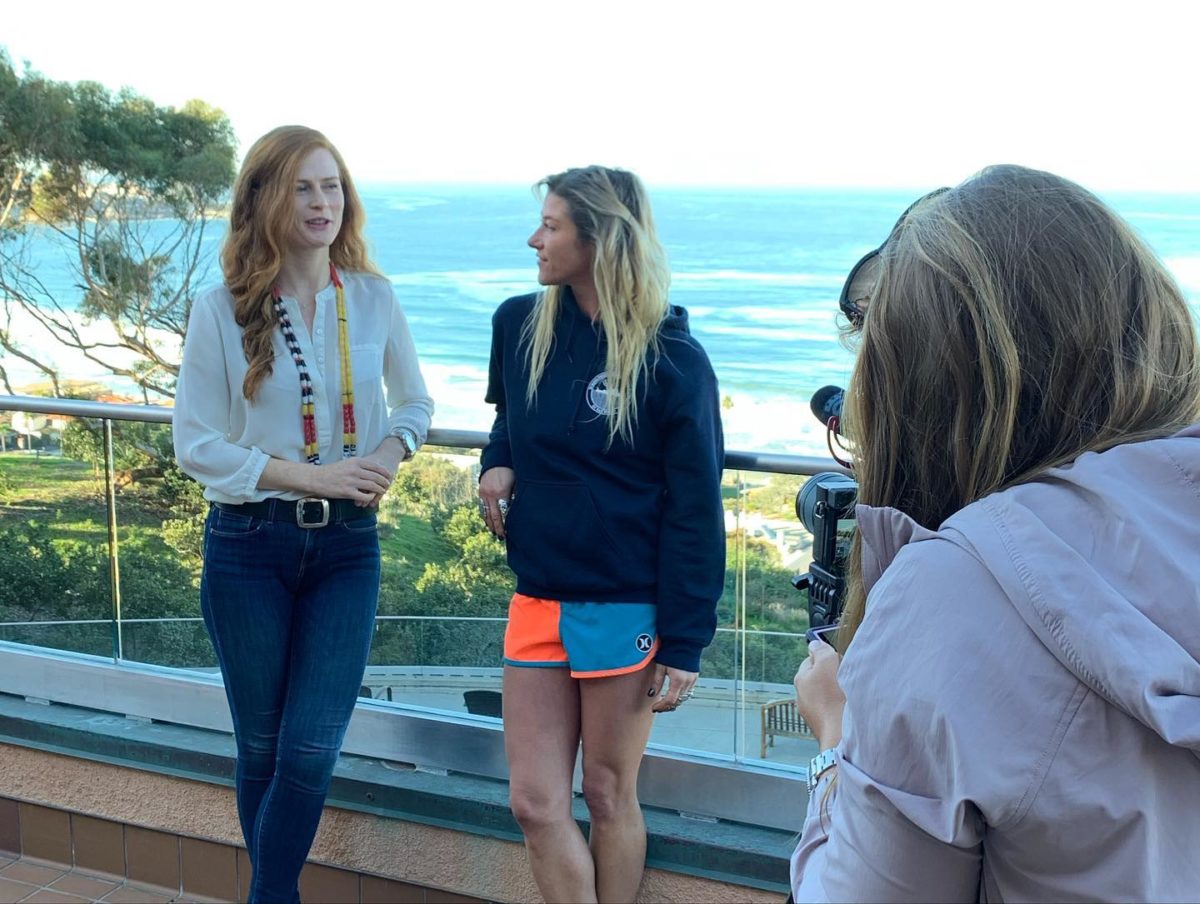
Photo: Emily Hazelwood
We met the vibrant and bubbly Ashleigh Palinkas of Scripps Institute of Oceanography to learn about her work. Filming Ashleigh was a joy and getting a tour of both Scripps Institute and the Birch Aquarium was a real privilege. I loved producing my first Mini-TV episode and cannot thank Amber and Emily enough for the opportunity. Check out the episode on this link.
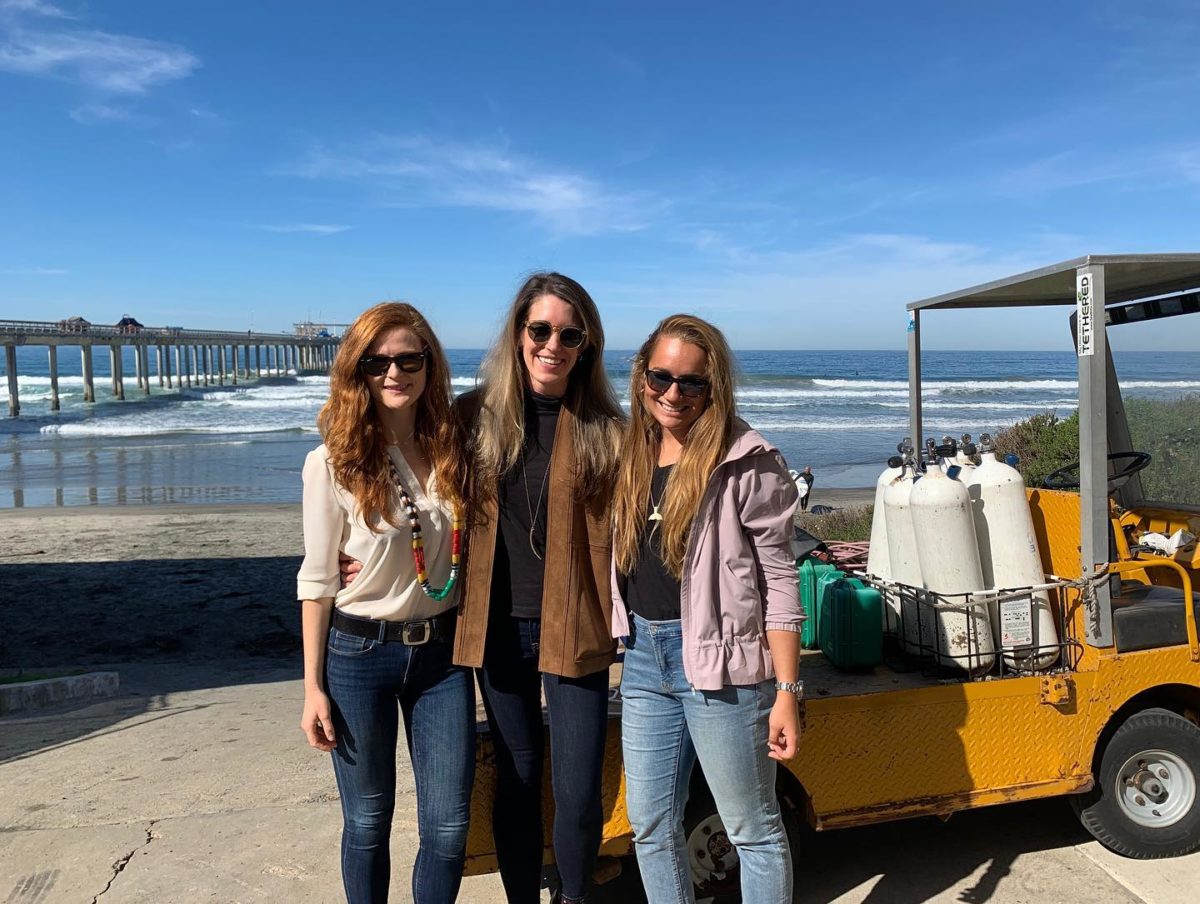
Photo: Ashleigh Palinkas
Next, it was back to high school where I assisted on the Blue Latitudes stand at the High Tech Fair, in Balboa Park, San Diego. This science fair offers students in years 7-12 to learn about all the different careers available to them in Science, technology and engineering The experience at the High Tech Fair was a great opportunity to engage in education and outreach and I had a great time interacting with the students, teaching them all about the work of a marine scientist. They were particularly amused by my Australian accent and I was frequently requested to quote some classic Australian slang such as ‘G’Day’. I thoroughly enjoy this quintessentially American experience of a high school science fair!
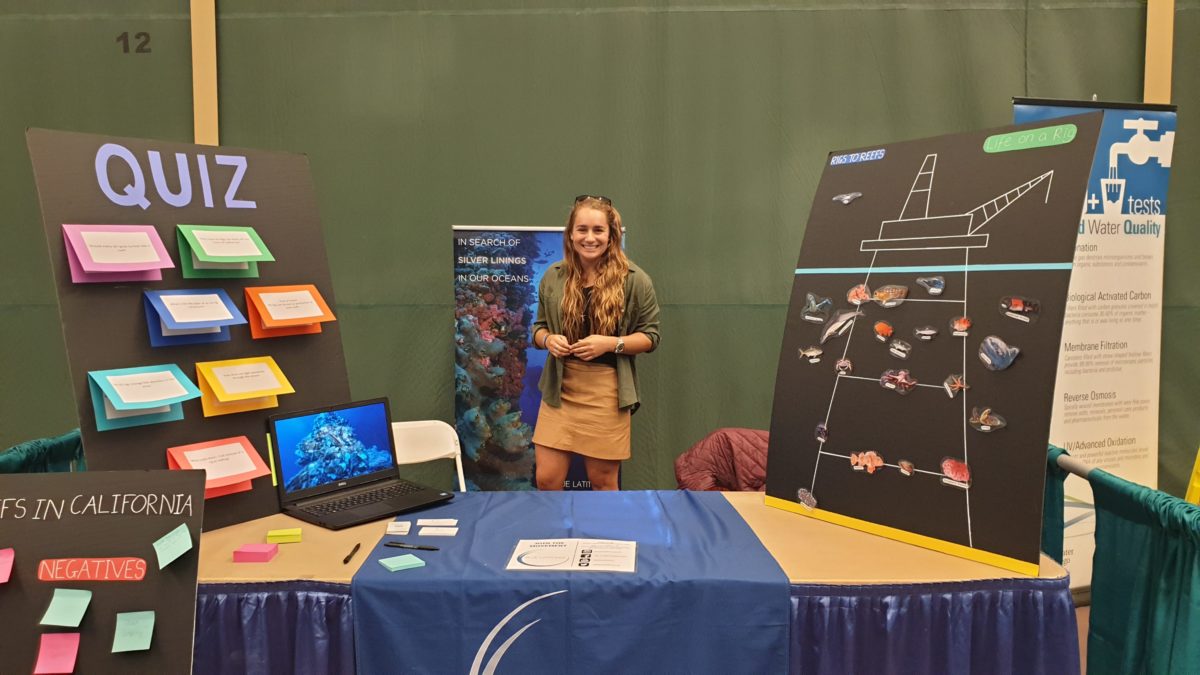
Photo: Clair Gonzales
I had a fantastic time in San Diego and loved working with Amber, Emily and Claire. I am on the constant lookout for inspiring female mentors who are pushing the boundaries of their field, but also willing to invest some time and energy into teaching me something new. Amber, Emily and Claire were exactly this. Passionate, confident and dedicated, the three of them gave me a fresh perspective of what it means to be a young woman in marine science, and what is possible.
Thank you so much to the team at Blue Latitudes for making this possible! I would also like to thank Rolex and OWUSS for their support this year and making these experiences happen. I had an amazing time in California and learnt more that I could possibly have anticipated.
